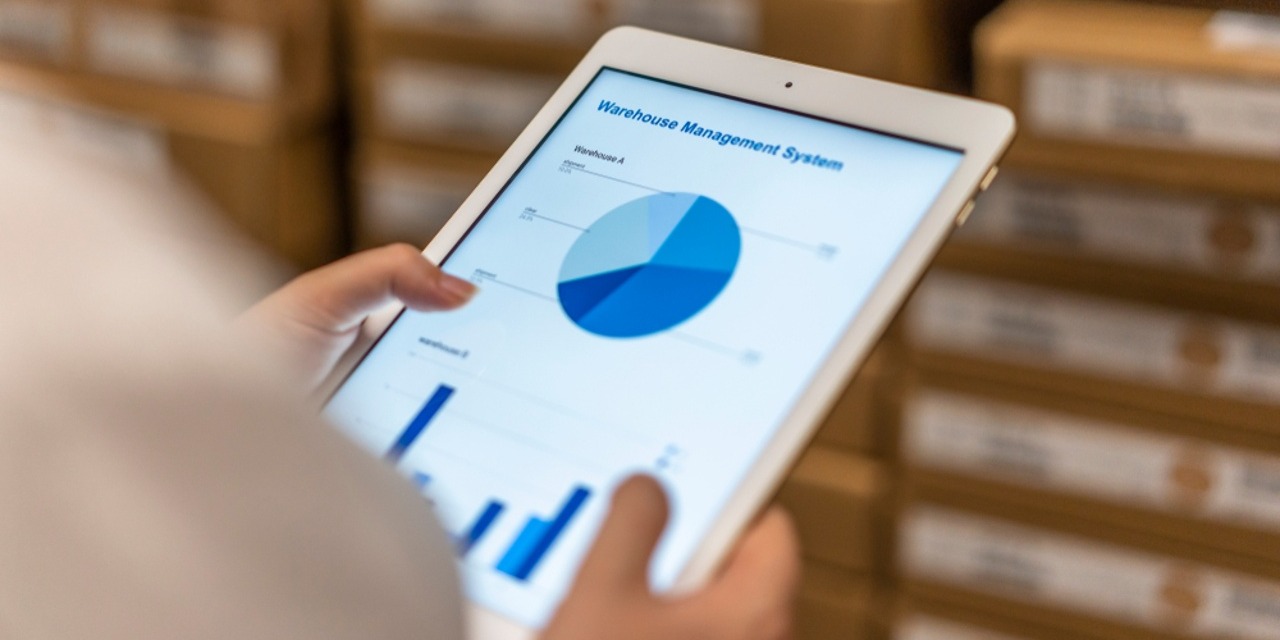Stock management is an essential factor in optimizing the sustainability of an enterprise.
The ability to manage stock efficiently is crucial for generating a good turnover rate and avoiding over-stocking and stock shortages.
In this article you can find out everything you need to know about stock management: its definition, roles, methods, objectives and key metrics.
And the more you know about stock management, the better you’ll do it.
What is stock management?
Stock management: a definition
“Stock” designates the goods moved as part of the operating cycle of a business. It can be consumed, sold as-is, or transformed into a product to be sold.
There are different types of stock. It may be composed of finished products, or raw materials, or parts and components intended for the manufacture of products, or defective products that have to be repaired.
Good stock management is essential to the financial health of an enterprise, as the value of its inventory represents both a financial burden and a capital asset.
As such, the stock management method, and the tools it uses, must not leave anything to chance. The economic stability and the responsiveness of the enterprise depend on it.
What’s the purpose of stock management?
For the uninitiated, stock management is often simply a question of storing products in a warehouse until they are dispatched to clients. But this is a very simplistic vision of an increasingly complex reality.

Stock management fulfils several functions that go far beyond stacking stuff in shelves:
1. Regulating inventory
To ensure continuous activity and avoid excess stock and shortages. This is crucial for enterprises to adapt to demand and retain full control over their business operations. Overstocking and stock-outs are two situations that must be avoided at all costs;
2. Improving logistics
Good stock management makes it easy to access storage zones, with rational organization of floor space and racking. Every aspect of the supply chain must be analysed and optimized to ensure rapid and efficient storage and retrieval;
3. Reducing logistics costs
Good management of stocks and restocking prevents financial losses associated with e.g. perishable products, and also makes it possible to negotiate better prices with suppliers (e.g. by buying larger volumes of product).
By making sure the right stock of products is always available, an enterprise can not only reduce its costs but increase its business volume too;
4. Predicting/hedging your business costs
Costs can fluctuate due to many factors (difficulties in sourcing raw materials, seasonal products etc.).
An enterprise that manages its stock well is less exposed to these cost fluctuations. By foreseeing such fluctuations, it can adjust its stock of products accordingly, and is better placed to negotiate better prices, for it avoids emergency measures.
How is stock managed?
There are several models of stock management, as we will see later in this article. Whichever model you implement, the fundamental principles are always the same. Good stock management takes place in several stages.
Define the warehouse’s stock requirements
This step lays the foundations for good stock management and is therefore crucial. First, we have to choose the appropriate stock management model.
Which model you choose will depend on whether you propose to operate on a just-in-time basis, for instance, or if your stock requirements exhibit little variation over the course of the year.
Then you have to keep buffer stock, i.e. a minimum quantity of products that is always available.
This buffer stock is essential to absorb stock shortages, but volumes must be carefully calculated to avoid overstocking.
Finally, we must be able to foresee problems. For example, perishable, seasonal and obsolescence-prone products require suitable stock management to avoid the need to destroy products, with significant financial loss.

Managing logistics procurement
Managing procurement is essential for good stock management. Numerous parameters are in play: we have to calculate costs, choose our suppliers, think about how to store the products and choose the best inventory model, so we know what to buy and when.
Each of these elements has a direct influence on the enterprise’s business. Poorly-organized warehousing processes or unreliable, insufficiently responsive suppliers can generate financial losses and hinder the smooth operation of the supply chain.
Continuously improving the organization of your distribution centre
Stock management is not an end in itself: it’s an ongoing process that must be continuously optimized.
The supply chain must be optimized to ensure the best possible turnover rate, and that means monitoring performance as closely as possible.
A dashboard or stock management tools such as ERP (Enterprise Resource Planning) can be used for this purpose.
Cash flow and working capital requirements must also be taken into account.
Stock management models
There are various stock management models. Which model we choose should depend on the needs of our business. There are no “good” or “bad” models. There are simply models which are more or less suited to the specific activity of the enterprise.
Model 1: first in first out
With this model, also known by its acronym FIFO, the longest-lying products are the first to be retrieved from stock. This model is particularly useful for dealing with perishable products: stock entries and exits ensure that products are not stored for longer than necessary.
This method is also used for non-perishable products which can be damaged by prolonged storage.
Model 2: last in first out
With this model, which is rarely used, the newest products are the first to be removed from stock. This solution may be envisaged for stocks which do not present a risk of expiry, obsolescence or deterioration.
Model 3: calendar restocking
This model requires solid upstream organization, as it works by ordering exactly the same quantity of products on a regular basis. When large quantities of product are in question, this model also makes it possible to negotiate more attractive tariffs and thereby save costs.
However, this model is not suitable for all enterprises, as it involves the financial ability to cover regular restocking. Neither is it suitable for the restocking of random or irregular products.

Model 4: restocking to order
On this model, products are replenished in the same quantities as orders placed. Quantities vary, as do the order dates, and therefore the delivery dates.
This model can reduce unnecessary capital investment, but requires good market knowledge and a lot of vigilance. It requires particular attention to stock levels: mistakes can have far-reaching consequences.
Model 5: demand forecasting
This model involves analysing the market and identifying trends to anticipate demand. This means predicting sales volumes, while reducing stock as mush as possible. Of course, you also have to be able to satisfy demand at the same time, which makes this model particularly complex.
Model 6: top-up
A new order is placed whenever stock levels fall below the defined optimal amount. Stock levels are thus adjusted gradually and remain broadly stable. This reduces unnecessary storage costs while preventing stock-outs.
What are the objectives of stock management?
Stock management responds to a variety of objectives:
- Responding to demand: knowing what to buy, when, and in what quantities.
- Cutting costs: avoiding understocking, stock-outs, overstocking and additional storage costs.
How do we calculate stock management needs?
To calculate the time it takes to move stock, divide the mean stock cost (i.e. initial stock plus final stock divided by 2) by the annual cost of purchases and multiply by 365 (the number of days in the year).
For example, if the mean cost of stock is €75,000 and the annual cost of purchases is €800,000, the result is (75,000 ÷ 800,000) × 365 = 34.2. This means it takes an average of 34 days to shift stock.
Stock management is a complex subject that involves numerous parameters. Your enterprise needs:
- the most suitable stock management model,
- the best stock management tools,
- a good knowledge of the market,
- optimized routine management.
Good stock management can save money, prevent stockouts and overstocking, and improve customer satisfaction. Good stock management therefore has a direct impact on your whole supply chain.





Laisser nous votre commentaire